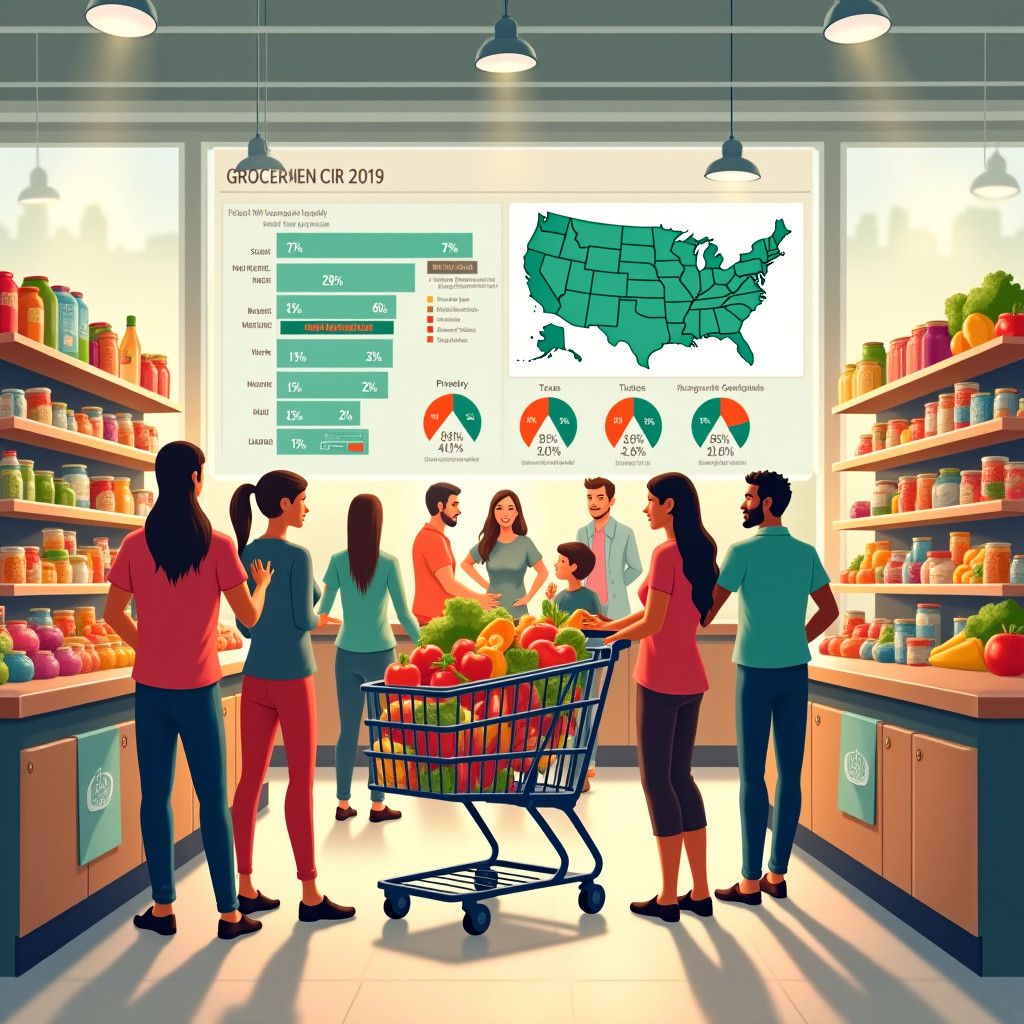This holiday season, a striking 80% of Americans are expected to feel the pinch of rising grocery bills, with 65% planning to shop more frequently. Upgraded Points’ recent research provides a detailed analysis of grocery spending habits across the United States, shedding light on regional differences that influence shopping behavior during this festive season.
Keri Stooksbury, editor-in-chief at Upgraded Points, emphasizes the significance of understanding how grocery costs fit into household budgets. “Grocery spending is a part of every household budget, yet how much Americans spend and where they shop can vary dramatically, depending on their state and the time of year,” she said. This study examined grocery spending and store density by analyzing census data normalized against median income and population metrics, allowing for a clearer comparison across states.
Grocery Bills on the Rise
The research indicated that grocery bills are expected to rise significantly during the holiday period. The states experiencing the most considerable increases in grocery spending include:
– Hawaii: 29.8%
– Montana: 28.3%
– Tennessee: 28.2%
– Virginia: 27.9%
– Texas: 27.7%
It’s not surprising that Hawaii tops the list, largely due to its high cost of living and reliance on imported goods. Texas, with its vast geography and diverse cultural holiday traditions, drives up grocery spending as residents prepare for festive gatherings.
Spending Less: Income vs. Grocery Bills
The study further explored the percentage of income spent on groceries across different states. Those spending the least included:
– New Hampshire: 10.7% of income
– Maryland: 11.2%
– New Jersey: 11.4%
– Massachusetts: 11.5%
– Utah: 11.8%
Higher-income states frequently appear on this list, indicating that wealthier households can allocate a smaller portion of their income to groceries. Utah’s position, as the only Western state here, may be influenced by relatively lower grocery prices and larger household sizes that benefit from economies of scale.
Conversely, states where grocery spending is a larger portion of household income include:
– Mississippi: 21.1%
– West Virginia: 20.2%
– Louisiana: 19.9%
– New Mexico: 19.7%
– Alabama: 18.4%
These states generally have lower median household incomes. Upgraded Points found that Southern states tend to be more affected by grocery spending due to their generally lower income levels.
The Consumer Price Index (CPI) Impact
The findings reflect broader economic trends, with 88% of survey respondents reporting increased grocery costs over the past year. This increase is supported by the latest Consumer Price Index (CPI) data, which highlighted a 0.5% rise in grocery prices in November. Notably, meats, poultry, fish, and eggs saw their prices increase; egg prices have surged by 8.2% due to supply chain challenges.
Grocery Store Density and Access
Access to grocery stores also plays a crucial role in consumer spending behavior. States with the lowest number of grocery stores per 10,000 residents include:
– Arizona: 1.1
– Nevada: 1.1
– Utah: 1.1
– New Mexico: 1.2
– Texas: 1.2
This trend is primarily seen in the Southwest, where vast distances between population centers mean fewer grocery stores, often consolidated into larger chains. The reduced density could compel residents to travel further for their groceries, impacting convenience and overall spending habits.
On the flip side, states boasting the highest grocery store density include:
– New York: 4.3
– Vermont: 3.3
– Alaska: 2.9
– Maine: 2.6
– New Jersey: 2.6
New York, with its urban landscape, evidences the necessity for easy access to groceries, leading to higher grocery store density.
Conclusion
As we approach the holiday season, understanding regional grocery spending habits can provide valuable insights for both consumers and businesses in the grocery sector. The Upgraded Points research not only highlights the varying costs associated with holiday shopping but also elaborates on how income levels and grocery store density can significantly influence spending behavior.
With grocery prices increasing and consumers navigating their budgets, strategic planning and targeted marketing will be essential for retailers to engage their clientele effectively.
